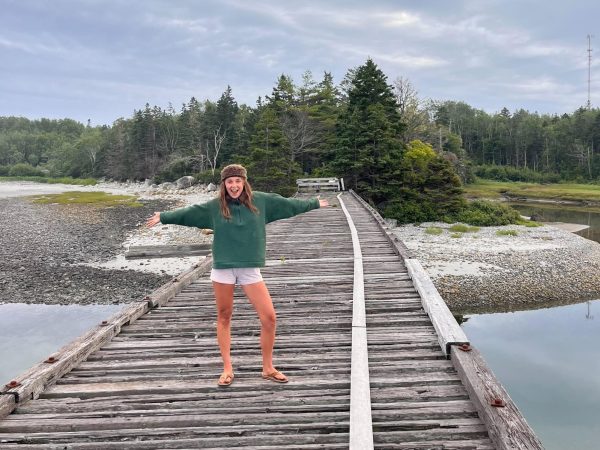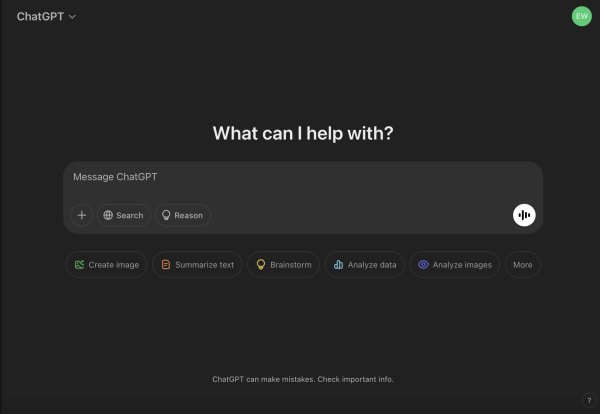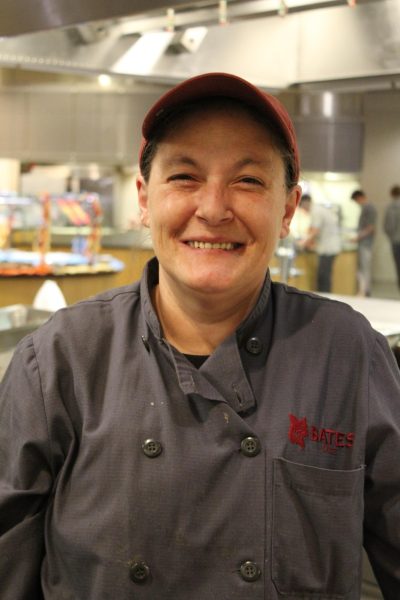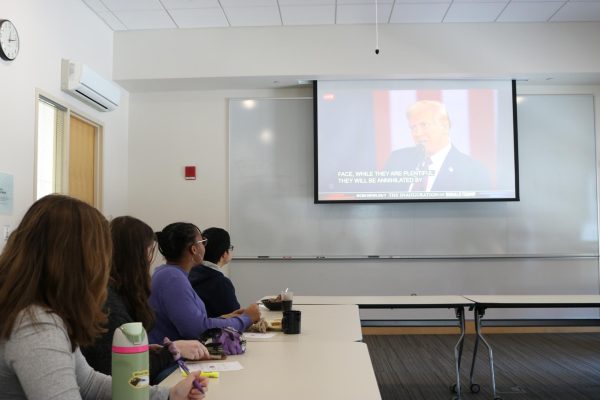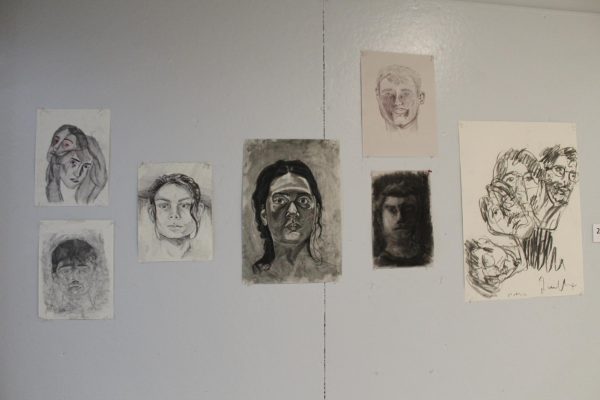Black@ Movement Takes Focus on Racism at NESCAC Institutions
The New York Times reports that between 15 to 26 million people have participated in protests or demonstrations for racial equality since the murder of George Floyd in May of this year. This makes the Black Lives Matter movement possibly the largest social movement in United States history, according to scholars and historians interviewed. The movement has pushed city, state and national politicians to consider more racially conscious legislation around policing and incarceration, namely, to defund police departments and reserve money for other programs and departments. This global conversation also prompted discussions around privilege and bias.
Considering that the COVID-19 pandemic has restricted many normal means by which to organize, the movement has had a large presence on social media platforms. This presence has taken the form of expressing the Black experience at predominantly white institutions (PWIs) of education. Namely, these grievances have been expressed on “Black@” Instagram accounts detailing mostly anonymous grievances of Black and Brown college and university students and faculty. These grievances are uniquely harrowing as they reference experiences in environments that are said to be accepting and inclusive spaces, but act in ways that tell a different story. Students and faculty at NESCACs have participated in this movement by sharing their experiences as Black, indigenous and people of color (BIPOC) on college campuses.
Given the private and oftentimes disturbing nature of the stories shared on Black@ accounts, the individual accounts are left anonymous. Though this decision was not necessarily completely their own, as the alum running the Black@Colby noted via email, “the reality of Black@ accounts is that there are some people who would prefer these stories not be told. In the short months that the Black@Colby account has existed, we have received threatening messages, told that we would be sued, etc.”
The administrator of Colby College’s Black@ account, who has referred to themselves as “T,” was also aware of the important connection that Black students have to the administration, since one major reason students choose to go to prestigious colleges is the networking opportunities. T also referenced students being unsure of who runs the account, questioning its legitimacy and connection to the Black community at Colby. “In retrospect, these students were absolutely, unequivocally right in their concern and hesitation,” T adds, “and it speaks to the fractured environment of the Colby community that the account was met with so much suspicion.”
Though all stories shared by the account are anonymous, the Black@ account for Amherst College found that revealing who ran the account allowed them to establish legitimacy within their college and allow more students to feel comfortable in sharing their stories. This differed from how the alums who run the account for Trinity College saw their identity’s role in their message. In an email, they stated that their identities do not matter, as they, “are not doing this for attention or notoriety, [they] are doing this to make Trinity College a safe place.” The inconsistencies in anonymity among these accounts shows how different the environments are within each college, further demonstrating that freely sharing stories from BIPOC students and faculty is a privilege in some spaces.
Some NESCAC administrations have addressed the grievances and suggestions from their Black@ accounts, but few in the NESCAC communities are happy with the depth of the response. Every Black@ administrator interviewed for this article expressed concern that their college will follow through on their words. Colby has neglected to respond to Black@Colby, and stories shared on @dearpwi, an account sharing stories from numerous predominantly white college and university, often go unanswered. “I think part of the lack of response comes from a fundamental misunderstanding of what the @BlackatColby account is,” said T in an email.
T is well aware of the strong marketing team behind Colby College, but recognizes that a display of the existing racism and continuous microaggressions on campus could result in a tainted view of the school. “This is heartbreaking to so many Black students at Colby, including the ones who have chosen to share their stories, sign petitions, etc. because most of us do love the school.” T believes that Colby may see these accounts and their push for a more inclusive campus as simply being a damning bashing of the college, but he wants to make it clear that: “Pushing the school and forcing them to be accountable is part of how we show our love.”
Whether or not a school will follow through with their responses is still up in the air. As the fall semester is quickly approaching and many NESCAC schools are still unsure of what the next semester and year will look like. The alumna running the Black@ account for Trinity feel unsure of how effective the college’s response will be, but are more concerned that “Trin Survivors,” an Instagram account expressing accounts of rape and sexual assault on the college’s campus, has not been formally addressed by Trinity. These issues are clearly intersectional, as the privilege to speak up about injustice is not equally available to everyone on college campuses.
Bates’ Black Student Union (BSU) has taken notice of President Clayton Spencer’s response to the emergence of stories about racism experienced by students and faculty on campus. The BSU feels that this statement follows a trend of schools acknowledging the criticisms without taking substantive steps to improve the experience of BIPOC students and faculty.
Layla Dozier ’21, co-President of the BSU at Bates, wrote in an email: “We as BSU want not only accountability, but for the administration to take the steps necessary to see students of color in their mission.” Layla continues, “bottom line: the statement means nothing without the correct intentions and actions behind it.” Considering Bates’ current plan of an on-campus model for the fall semester, the BSU is curious to see what physical and institutional changes could begin to happen following the response from the president.
Though the BSU aims to protect Black students on campus, Joshua Redd ’21, co-President of the Union, believes that it should not solely be on affinity organizations to do the brunt work of creating a more inclusive campus.
“I want to see Bates College, in partnership with a series of Ivy League and other Ivy-esque institutions, do tiring and laborious work that will ensure that their students are protected.” Over email, Redd continued, “I do not believe that the radical change that we seek can be made by incremental reforms or using the Institution’s systems and processes. We must be willing to preserve our students, our faculty, our professors, and especially our greater Lewiston community over the needs of individual privileged students and gains for the college.”
With the emergence of the Black Lives Matter movement’s presence on social media came a rush of students sharing ways to get involved with the movement. Many posts being shared have detailed petitions and donation pots in need of support, as well as educational content about anti-racism and Black history. Redd is also curious as to why this response is happening now, as systemic injustices and racism on college campuses has always been a pressing issue.
“It’s unfortunate that white people needed to see the police killing another Black man for them to realize that the violence Black people have been experiencing for centuries is valid and real,” he said. “Now, white people want to blacken their Instagram photos. Now, white people want to talk about race with their families. Now, white people want to uplift Black voices.”
This is not to dissuade non-Black people from taking action, but to recognize the privilege that comes with not having racism be a lived experience. Redd wants to make it clear that simply having an active social media presence about anti-racism is not enough. Black liberation is also not dependent on non-Black people. But it is not simply a singular affair where attending one demonstration will solve the issue. Redd adds, “I’m very interested in seeing how Bates students will bring their social media politics with them.”
As the fall semester approaches, the question of whether the online energy will move to real-life campus organizing and campaigning is still an uncertainty. Many Black@ accounts operate in schools that have high percentages of liberal students, which they believe creates a culture where racism does not exist. The stories expressed in the Black@ movement shows that that is not the case.
This is becoming clearer to white followers of these accounts, but, as the Black@ account for Amherst remarks over email, “unfortunately, many people still do not understand how racism plays out on campus, and so we hope that [the stories shared] will be a collection to draw from and understand why we are demanding change.” This comes with the realization that the stories shared by Black@ accounts are not isolated incidents and are likely to repeat as systemic racism continues on college campuses.
Black@ accounts want to see the words expressed by students on social media and college’s official responses to translate into actions on campus. Since the fall semester experience is uniquely distinct between various colleges and very different from previous years, this action will look different depending on the resources available and what’s possible with safety guidelines.
The continuation of the Black@ movement, though, is expected to continue. “We have seen a decline in stories being shared and traction to our page but we are not letting that discourage us.” The administrators of the Black@ account for Trinity continue, “our stories are still valid, still staying up, and we will continue to be loud and work towards making more permanent change.”
Your donation will support the student journalists of Bates College and help us cover our annual website hosting costs.


